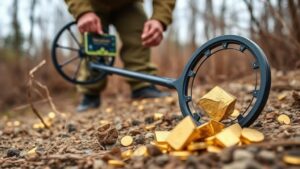Mining in Ancient Africa: Extracting Iron and Precious Metals
Mining in Ancient Africa: Extracting Iron and Precious Metals
Mining has played a pivotal role in the development of societies throughout history. In ancient Africa, the extraction of iron and precious metals significantly contributed to technological advancements and economic wealth. This article explores the techniques, methods, and social implications of mining in ancient African civilizations.
The Importance of Iron in Ancient Africa
Iron was an essential resource for many ancient African societies, facilitating advancements in agriculture, warfare, and craftsmanship. introduction of iron tools and weapons transformed labor productivity and societal organization.
- Development of Tools: Iron tools such as plows and hoes revolutionized agriculture. With stronger and more durable equipment, farmers could till the land more efficiently, leading to higher crop yields.
- Military Technology: The creation of iron weapons allowed for more effective defense and conquest, altering power dynamics among various tribes and kingdoms.
Extraction Techniques
Ancient African societies developed sophisticated methods to extract iron ore. These techniques varied by region but exhibited remarkable similarities in terms of the materials and processes used.
- Furnace Construction: Iron was typically extracted through the use of clay furnaces. Techniques varied, but most involved a smelting process where iron ore was heated along with charcoal. An example is the bloomery method, employed in regions like sub-Saharan Africa.
- Use of Bellows: Bellows made from leather were used to increase air flow in furnaces, elevating temperatures necessary for smelting. The introduction of bellows allowed for larger quantities of iron to be produced.
The Role of Trade
The extraction of iron and precious metals contributed to extensive trade networks across Africa. Iron was not only a commodity for local use but also a valuable trade item.
- Regional Trade: Regions abundant in iron, such as the Nok culture in present-day Nigeria, traded iron goods with neighboring communities, facilitating economic interaction.
- Long-Distance Trade: Precious metals like gold were extracted in various parts of Africa, including the region around the Mali Empire. The wealth generated from gold mining allowed empires to flourish and fueled trade with distant markets, notably in Europe and the Middle East.
Case Studies: The Mali Empire and Great Zimbabwe
Two prominent examples of ancient African civilizations that successfully utilized mining resources are the Mali Empire and Great Zimbabwe. Both societies leveraged their mineral wealth to exert significant influence and control over regional trade.
- Mali Empire: Renowned for its vast gold reserves, the Mali Empire controlled trade routes across West Africa. Figures such as Mansa Musa, who famously undertook a pilgrimage to Mecca laden with gold, exemplify the empires immense wealth derived from mining.
- Great Zimbabwe: This civilization was known for its rich deposits of gold and iron. The production of metal goods at Great Zimbabwe not only supported the local economy but also established dominance in trade networks across Southern Africa.
Conclusion: The Legacy of Ancient Mining Practices
The mining of iron and precious metals in ancient Africa was not simply a means of resource extraction, but a catalyst for socioeconomic development. These practices led to innovations in technology and established trade connections that significantly influenced the continents history.
The lessons from ancient African mining practices highlight the importance of sustainable resource management and the opportunities that can arise from responsibly harnessing natural resources. As modern societies continue to engage in mining activities, the ancient precedents in Africa remind us of the complex interplay between resource extraction, societal change, and economic development.
Actionable Takeaways
- Identify learning from ancient mining techniques that can inform current sustainable mining practices.
- Explore the historical significance of trade in shaping economic relationships in ancient societies.
- Consider the socio-political impacts of resource wealth on modern African nations, inspired by historical contexts.


